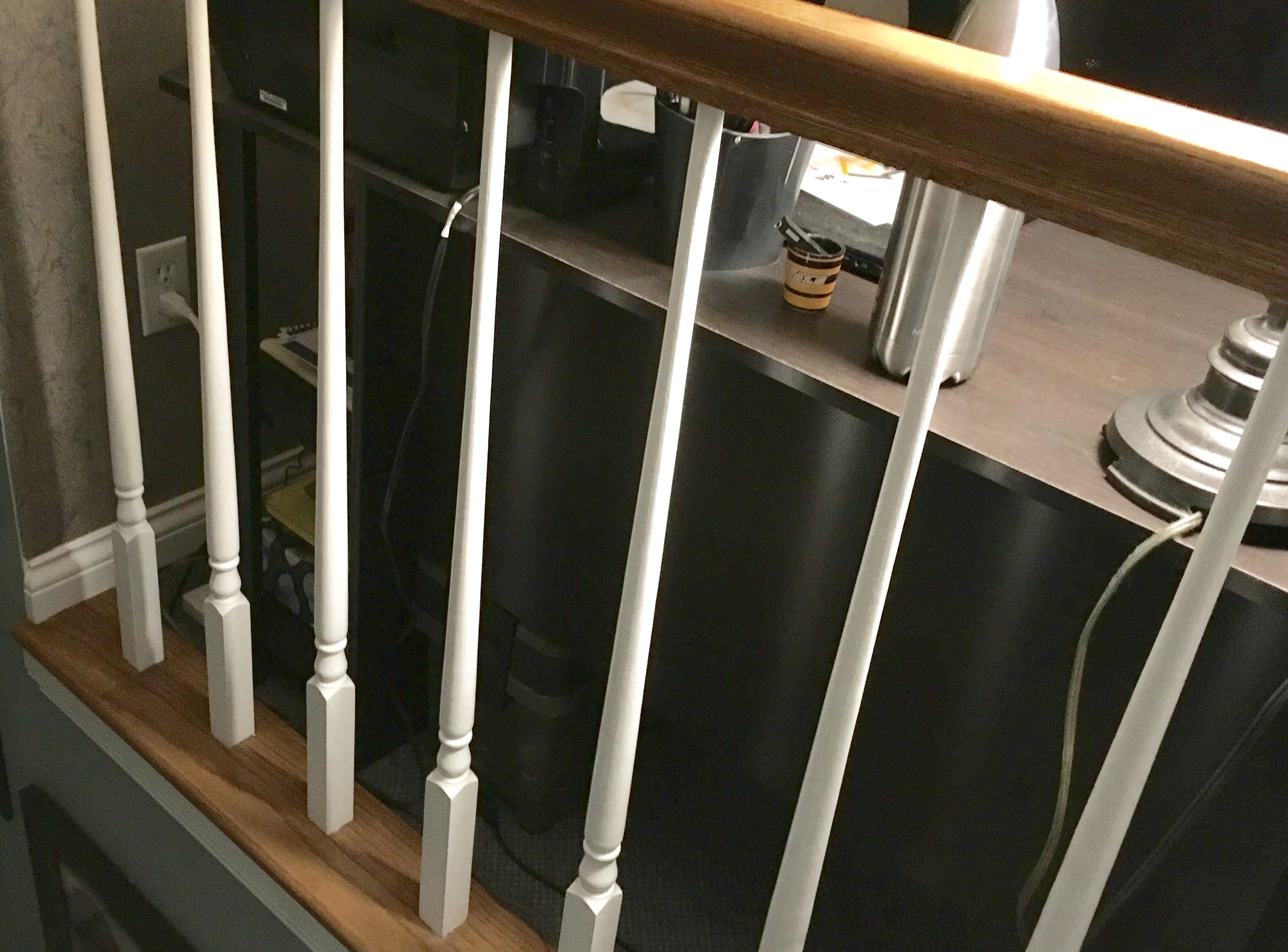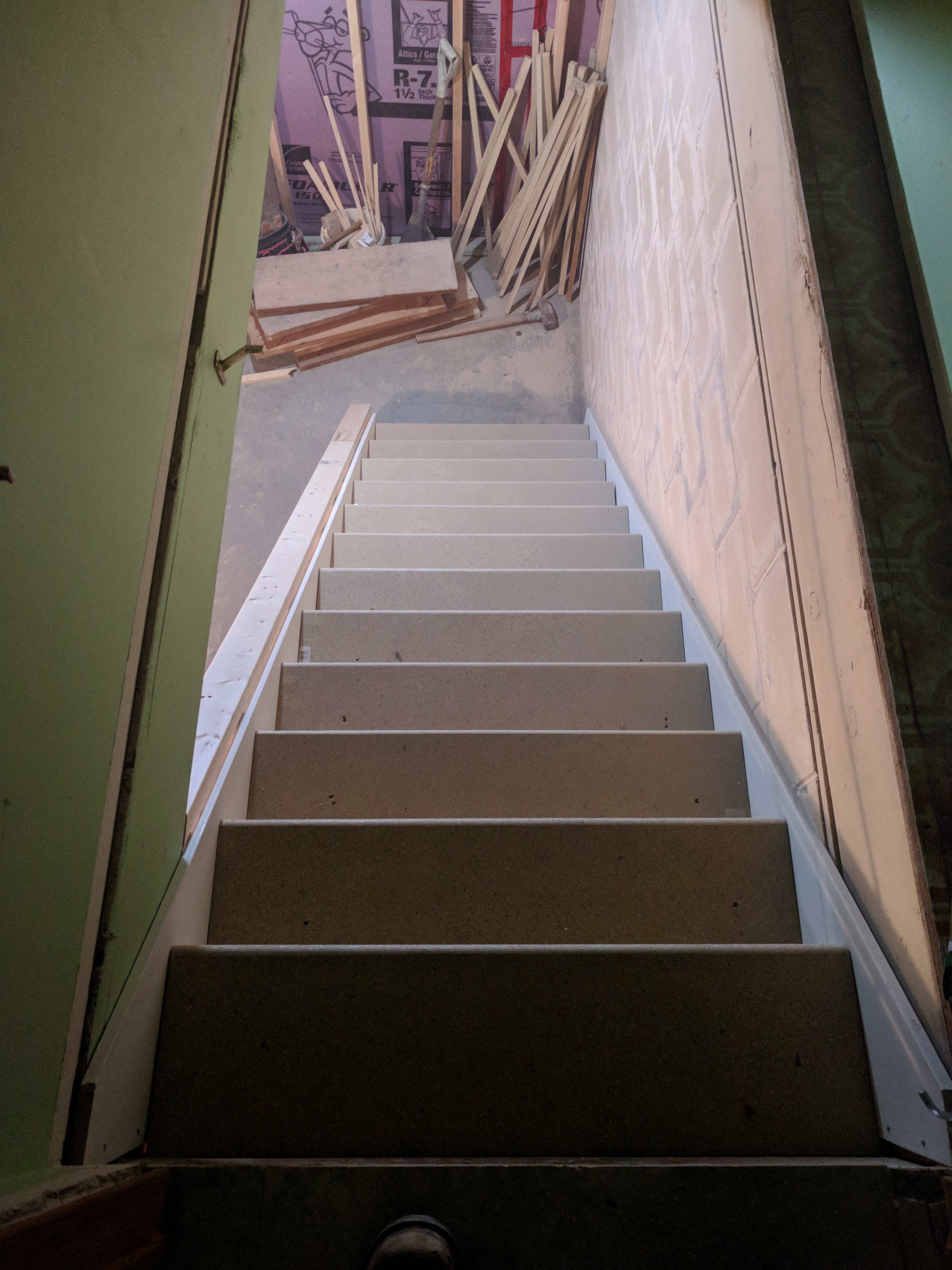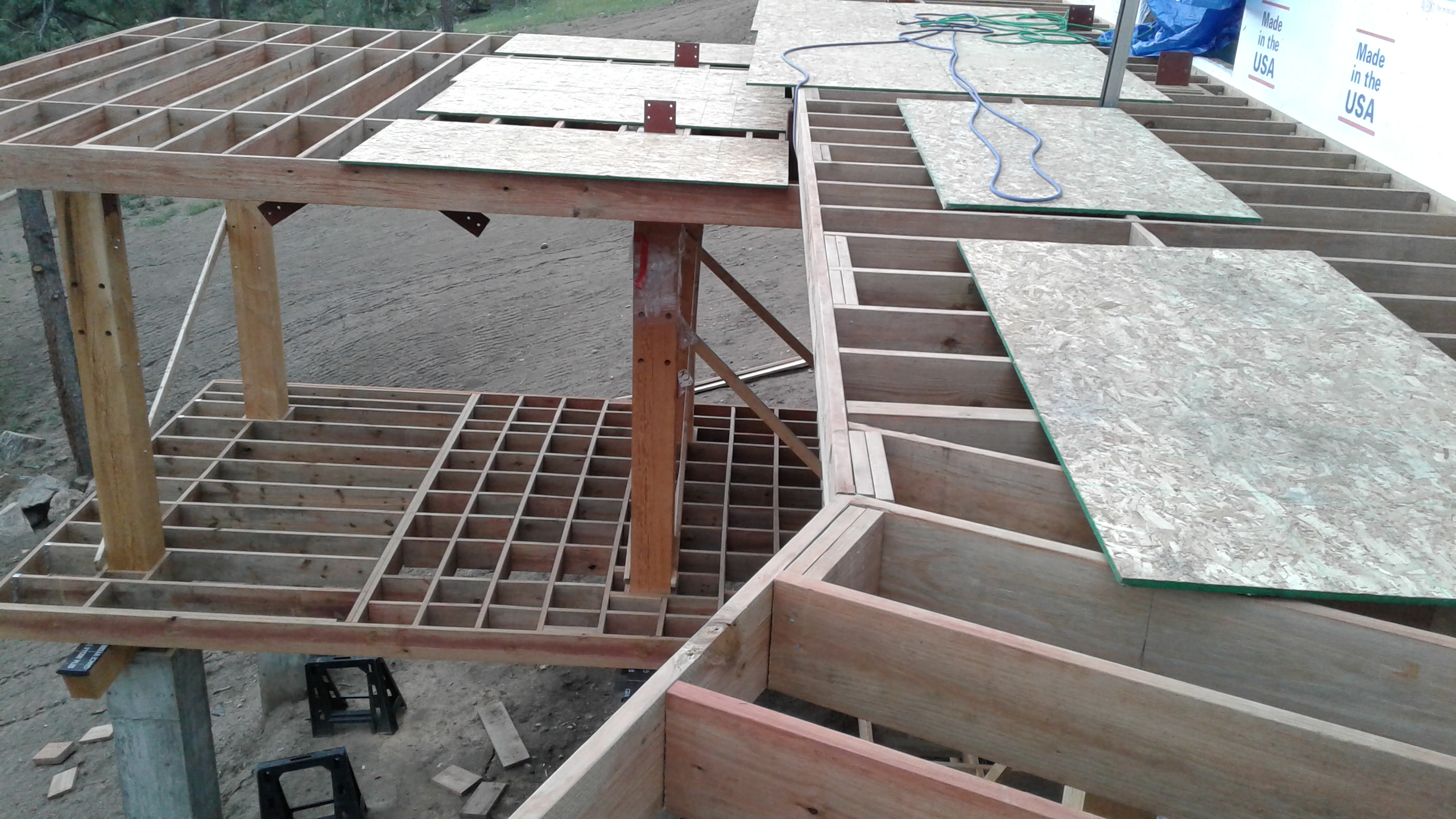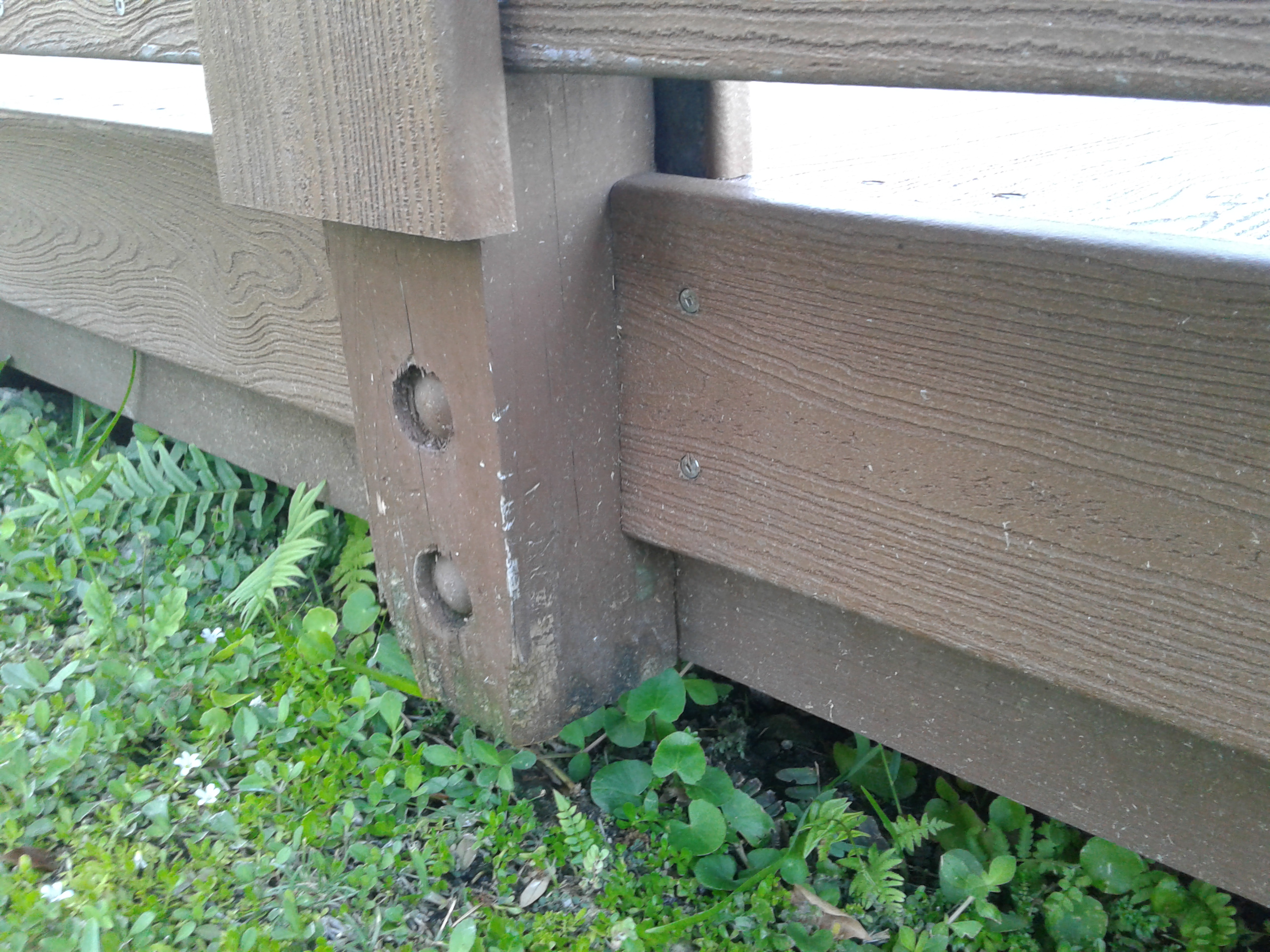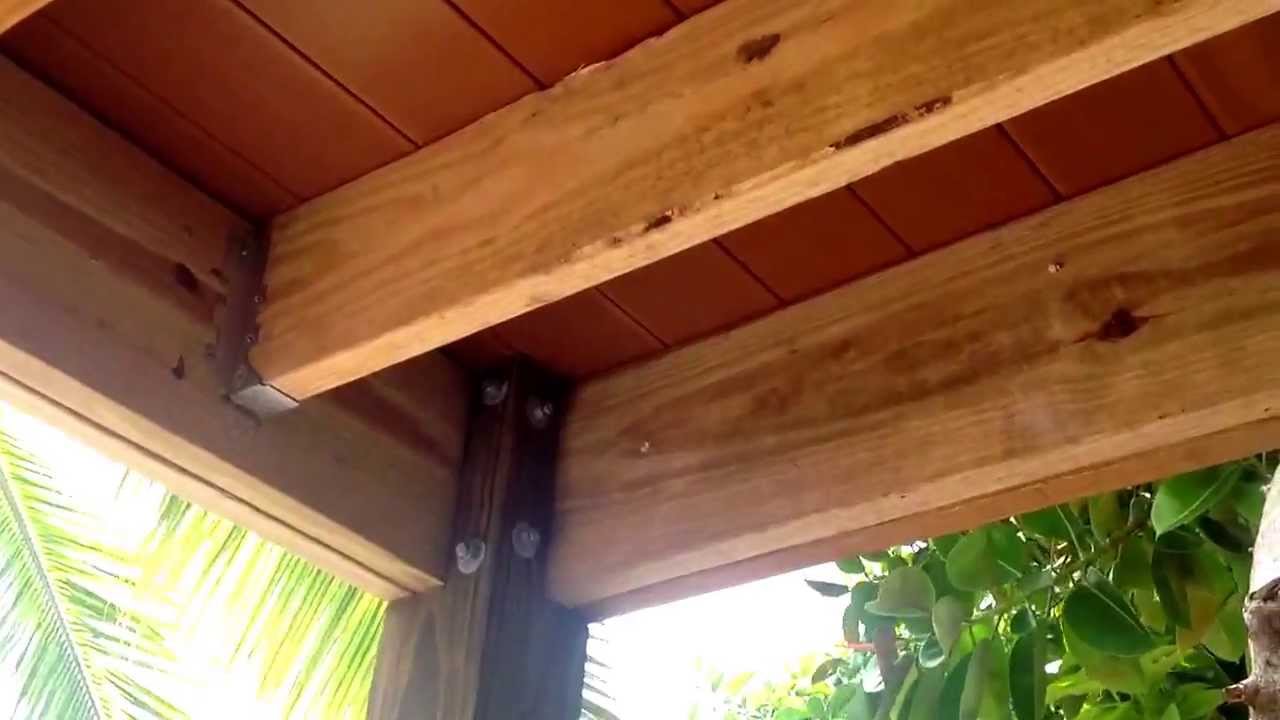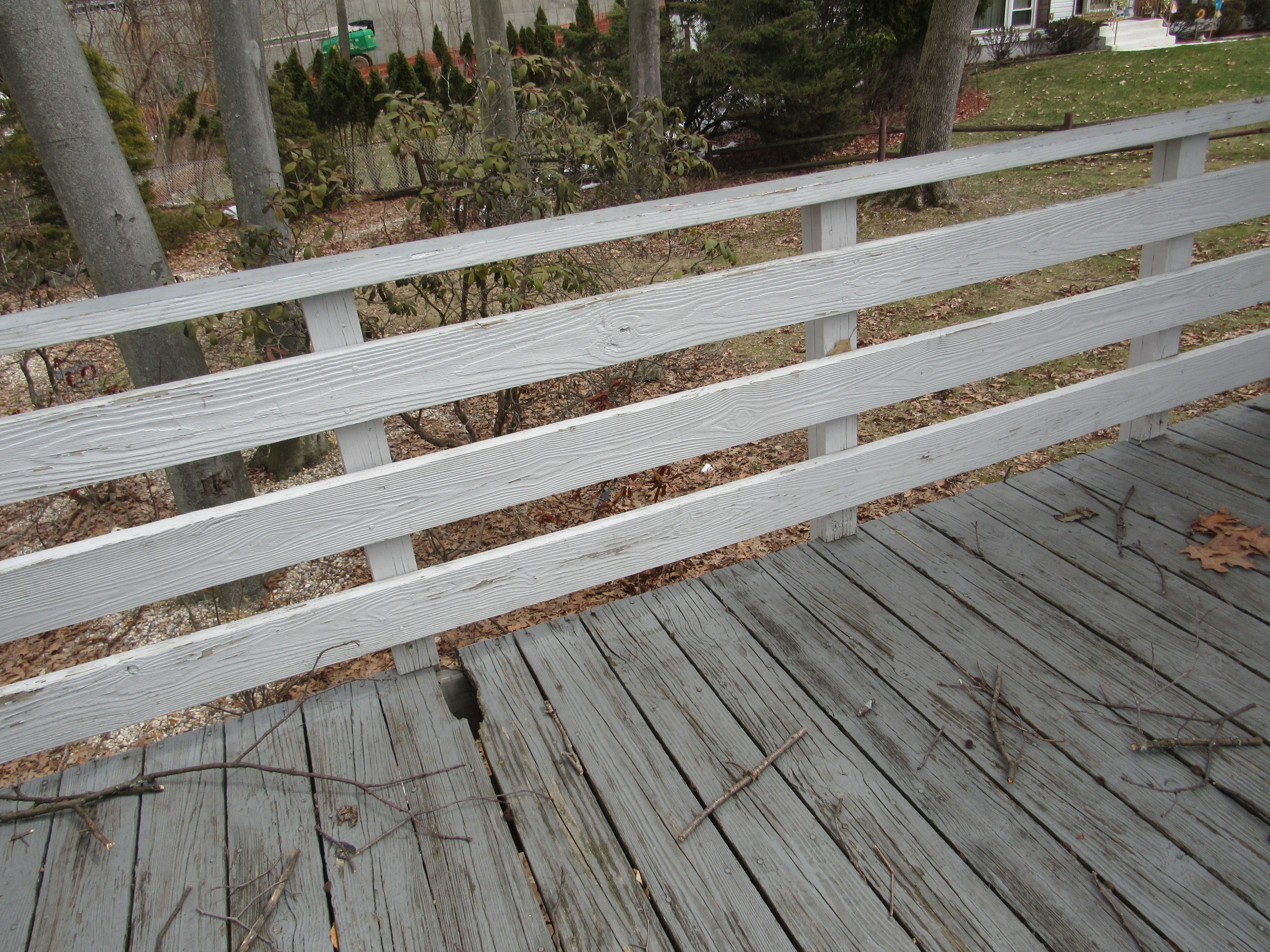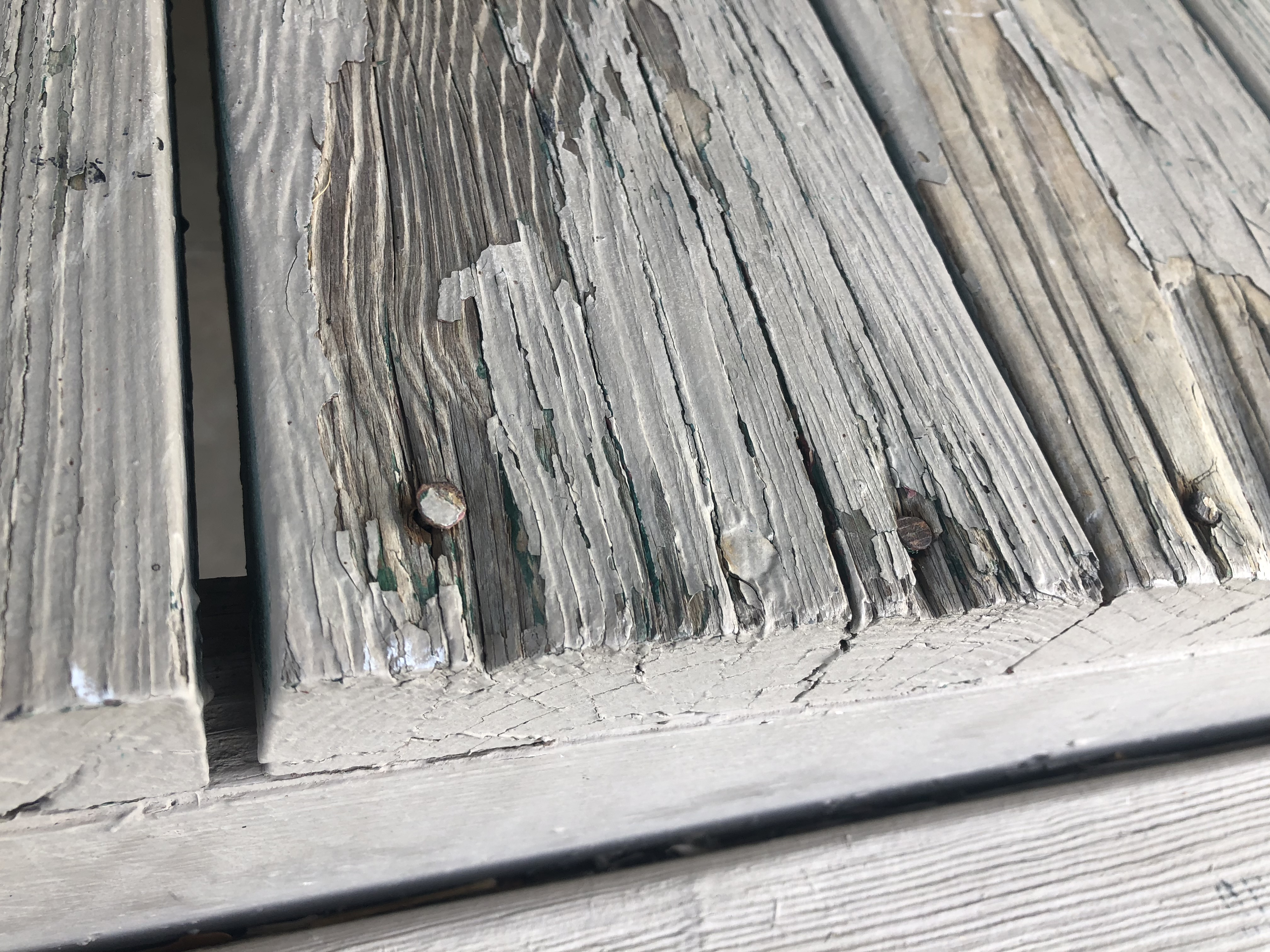Ledger Connection:
The most common cause of deck collapseis when aledgers pulls away from the band joists of homesand buildings.
The two most common ways to correctly attach a ledger to a structure are withlag screws or through-bolts.Lag screws or bolts should be staggered vertically, placed at least2 inches from the bottom or top, and5 inches from the ends of the ledger board. Some codespermit the lag screws or bolts to be as close as 2 inches from the ends of the ledger board;however, avoiding the very ends of the ledger boards minimizes splitting from load stress.Through-bolts should be a minimum of -inch in diameter, and have washers at the bolt head and nut. Lag screws should also be a minimum of -inch in diameter and have washers. Expansion and adhesive anchors should also have washers.
Deck ledgers shouldbe ofat least 2’x 8’ pressure-treated wood.
This staircase has 4 risers and therefore requires a railing with balustrades/ infill . The hand rail is made from 1 x 6 decking and is ungraspable. At least one side of the staircase needs a graspable railing with returns. The deck is open on one side with a height of 28. While it does meet code in Oregon, railings with infill should be added to the two open sections to prevent someone from stepping off the deck.
Proper placement of girders for decks are super important. They are there to bear all the live and dead loads of a deck. Most of the live loads exist by the railing, so it is extremely important for proper girder installation.

I saw a picture of the incorrect way to butt girders on a deck. They show a picture of a girders butting in between posts. This is dangerous and acts as one girder as opposed to 2 girders which is minimal to code.
Balusters are improperly spaced, balusters are measured at 5 3/4 inches apart. Baluster spacing should be no more than four inches apart. Improper baluster spacing is a safety hazard for small children. Recommend the addition of additional balusters for proper spacing.
Balusters are improperly spaced, balusters are measured at 5 3/4 inches apart. Baluster spacing should be no more than four inches apart. Improper baluster spacing is a safety hazard for small children. Recommend the addition of additional balusters for proper spacing.
The greatest stair tread nosing projection shall not exceed the smallest nosing projection by more than 3/8 inch between two stories, including the nosing at the level of floors and landings. A nosing is not required where the tread depth is a minimum of 11 inches
The IRC requires guardrails to be at lest 36" in height measured from the deck surface to the top of the rail.Maximum spacing of posts is 72 inches on center. 200lbs of pressure against the top rail is equivalent to 1700lbs on the bottom bolt of the post.
This is the new construction of a double-decker deck that took place in Gennessee, Colorado. The lower deck is at the basement level, the upper deck is on the first level and the third level has no deck or balcony at all.
In the article, “Farther” vs. “Further,” the author explains an easy way to remember which version of the word to use and I made that easier for myself. The designation lies in the ability to substitute an actual distance for the word farther. I remember the trick by the a’s in the phrase ‘actual distance’ and the a in ‘farther.’
This picture shows a deck that was retrofitted with synthetic planks over the original pressure treated posts. The new synthetic planks and stainless steel fasteners are in good condition but pressure treated posts show indications of decay and the posts’ galvanized bolts and nuts show some corrosion. By not installing new posts and fasteners, the old pressure treated posts will continue to deteriorate much faster than the new synthetic planks, presumably raising costs for post replacement in the near future.
Decks are often built by homeowners or unqualified contractors who make very common mistakes such as using the wrong kind of fasteners, fewer fasteners than required, poor ledger board attachment or flashing, inadequate spacing of fasteners from edges, recessed bolts which reduce structural integrity of framing members, and most often hand guards and hand rails that do not meet load and or spacing requirements.
This photo shows a corner post that has been notched on both sides so that both girders are resting on the post for proper support and bolted with galvanized lag bolts to help prevent any sideways movement along with added stability.
The image in the gallery shows the proper way to position a girder so that it is resting on the post and not just against the post with a couple of bolts holding the girder in place.With the girder bolted to the post the bolts are taking the weight of the support and with the girder on top of the post the weight and support is put on the post the way it should be.
Horizontal railings were noted at the deck located at the rear of the home. The railings are a safety hazard as it allows children to easily crawl over the railings. The railings should be replaced or closed off by a reputable licensed contractor.
The deck railing located at the rear had horizontal railings which is a safety concern. Horizontal railings allows children to easily climb on / over. The railings should either be closed or removed. Services of a reputable licensed contractor is needed.
Railing shown above meets necessary the requirements. Distance between balusters is 3.5", deck to bottom rail is 2.5", distance between posts is 42" on center. Balusters are cut on an angle to shed water (not shown in photo). Deck to top of top railing in only 35", however patio deck surface is only 10"- 11" above grade and therefore does not technically need a railing.
The fact that only 40% of decks installed are completely safe makes the point that deck inspections are a very crucial part of home inspections. The high percentage of failure from separation from the ledger board and high incidence of railing failure indicates areas needing extra diligence during inspections. One other place to focus on is stair handrails missing or not being graspable. These are all areas to give additional attention to in an inspection scenario.
This is a photo of a second story front porch deck. Normal “wear” on the wood surface. I recommended cleaning and painting the exposed wood. Nails were starting to pop up due to the age of the deck. This is definitely a safety issue. Nails and screws should be properly secured.
Home owners are always looking for ways to save money on their electrical bill. Making your home more energy efficient can also provide our customers with tax breaks. Replacing your air filter regularly can also help your HVAC unit. This can improve production and reduce costs.

